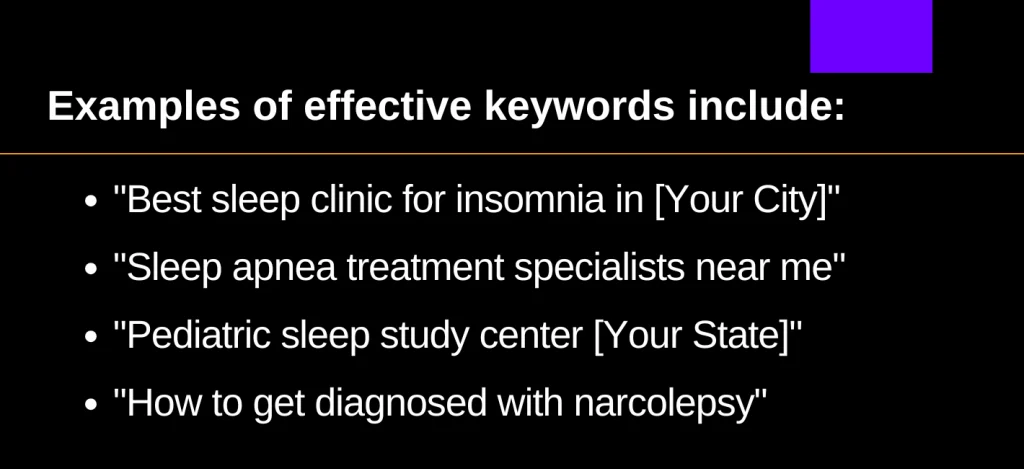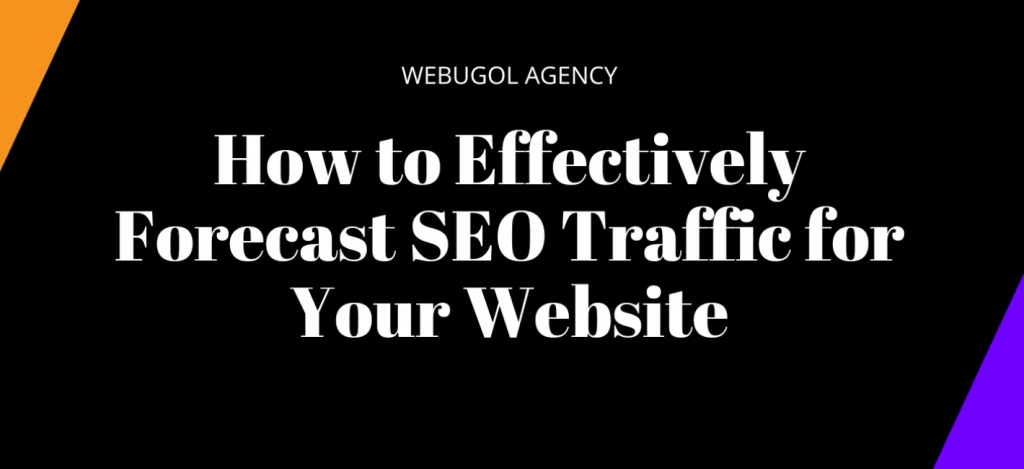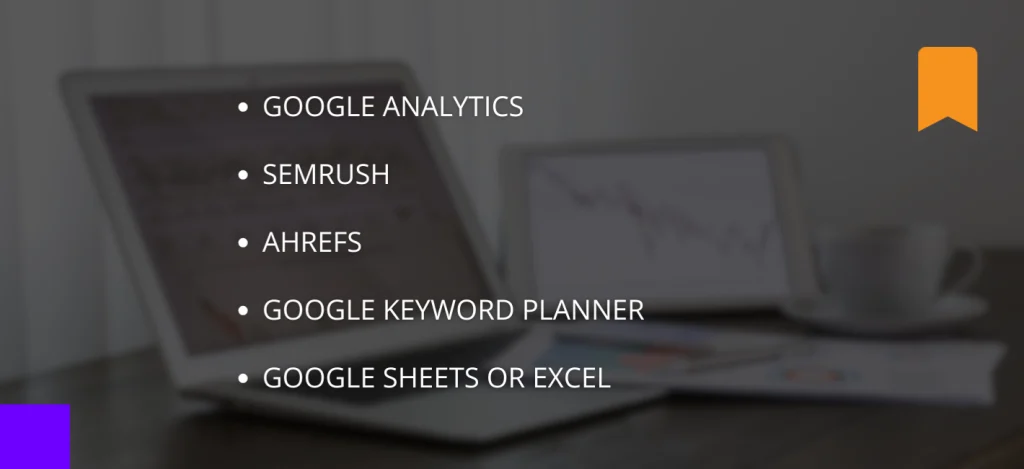How to Effectively Forecast SEO Traffic for Your Website
Predicting the future has long been a human fascination, from crystal balls to complex stock market models. We have our own version of this in the area of digital marketing: forecasting SEO traffic. It is a roadmap for the future with data backing. Learning how to predict SEO traffic helps you to optimize your content, make better use of resources, and create impactful strategies in advance. At Webugol Agency, we believe that solid SEO forecasting is the foundation of any successful SEO strategy.
With that context in mind, let’s explore how to create a step-by-step plan and the tips for forecasting SEO traffic growth that you need.
What is SEO Forecasting?
SEO forecasting predicts a website’s organic traffic over time. It uses a combination of historical data, keyword research, market trends, and competitive analysis to create a projection of future performance.
Forecasting and analytics must be distinguished. Although connected, they serve different purposes:
- SEO Traffic Forecasting looks forward. Analytics help it forecast the future. “If we rank for these new keywords, how much more traffic can we expect in the next quarter?”
- SEO Analytics looks backward. It looks at both past and present data to tell you what has already happened, such as how many visitors you had last month, which websites were the most popular, and where your traffic came from.
Analytics shows you where you’ve been, and forecasting helps you figure out where you’re going.
Why is Forecasting SEO Traffic Important?
Predicting SEO traffic it’s a useful commercial tool that can help you. You can justify your marketing investment, set reasonable goals, and coordinate your SEO activities with more general business goals by forecasting future organic traffic.
Here are some key benefits of effective SEO traffic forecasting:
- Better Content Planning
- Smarter Resource Allocation
- Trackable Progress and Goal Setting
- Informed Business Decisions
In the end, traffic forecasting for SEO changes your strategy from reactive to proactive, giving you the power to make decisions based on data that lead to long-term success.

Key Factors for SEO Forecasting
To make an accurate prediction, you need to know what factors affect organic traffic. Here are the core factors you need to consider:
Keyword Research
Your SEO traffic forecasting is based on the target keywords you want to rank for. Consider search volume, keyword difficulty, and CTR within target searches, too. High-volume keywords tend to be competitive, and these keywords are likely hard to uncover.
Backlink Strategy
For search engine ranking, backlinks remain a key factor. More quality backlinks give a site better ranking power. Growth in your backlink profile should also be taken into account when making predictions about expectations.
Current Traffic Data
Your website’s past SEO performance is best for forecasting. Look into the trends in your organic traffic over the last 6 to 12 months to find patterns in user behavior, growth rates, and initial performance indicators.
Content Strategy
The quality, relevance, and frequency of your content updates play a significant role. Forecasting SEO traffic should include your content plan, including how many new articles and whether you’ll update pages.
Seasonality and Trends
Many industries see changes in search demand based on the season. Your forecast must include predictable peaks and valleys.
How to Forecast SEO Traffic: A Step-by-Step Guide
Now, let’s put theory into practice. Here is a step-by-step process for forecasting organic traffic in SEO.
1. Analyze Your Current Traffic
First, look at your past data using Google Analytics or Google Search Console. Determine your average monthly traffic, seasonal trends, and baseline year-over-year growth rate. Find out how much traffic you get on average each month, look for any seasonal patterns, and figure out your baseline year-over-year growth rate.
2. Conduct In-Depth Keyword Research
Make a list of the terms you want to rank for. For each keyword, get the following SEO forecasting metrics:
- Monthly Search Volume
- Keyword Difficulty
- Estimated Click-Through Rate
3. Check Competitor Data
Assess the performance of competitors’ ranking for your keywords. Check out their traffic, the keywords they rank for, and the links that point to them. This can help you predict keyword traffic and create realistic search ranking goals. Tools like Ahrefs or SEMrush are excellent for forecasting SEO traffic.
4. Adjust for Seasonality
Using your historical data, identify any seasonal patterns. By comparing the monthly traffic to the yearly average, you may create a seasonality index. Use this index to make your baseline forecast more accurate by taking into account changes that are likely to happen.
5. Estimate Future Growth and Build Your Forecast
This is where you put everything together. By projecting your present traffic forward and adding SEO gains, you can easily forecast.
A common method is to use a Compound Annual Growth Rate (CAGR) model or a simple trend line based on past growth. Then, estimate the additional traffic you’ll gain from new keyword rankings.
This generates a detailed SEO traffic forecasting chart that tracks your growth.
Tools for SEO Forecasting
You don’t have to do this all manually. Many SEO forecasting tools can help you collect data and make your prediction.
Common Challenges and How to Overcome Them
Forecasting SEO traffic isn’t an exact science, so you might encounter some challenges.
Unpredictable Algorithm Changes
Google updates can shake up rankings unexpectedly.
- Solution: Use strong, white-hat search engine optimization basics to build your strategy so that it is less likely to be affected by changes in algorithms. To avoid being entirely dependent on organic search, diversify your sources of traffic.
Inaccurate Data
Search volume and CTR data are estimates.
- Solution: Be careful with your predictions. It’s better to promise less and deliver more. To gain a more balanced view, use data from more than one source.
Unrealistic Expectations
Aiming to rank #1 for a highly competitive keyword in one month is likely unrealistic.
- Solution: Set goals that you can reach based on your resources, budget, and the keyword data. Set smaller, more manageable goals for yourself.
Turn Your Forecast Into Action
SEO traffic forecasting is only useful if you act on it. Use your predictions to help you manage your SEO efforts and make your website work better.
- Optimize Your Content: If your forecast finds keywords with a lot of potential, write thorough, high-quality content that targets those terms.
- Adjust Your Strategy: If your SEO growth is below the forecast SEO growth, you need to diagnose the problem. Are your pages underperforming? Is your CTR below expectations? Refine your strategy using this information.
- Report on Progress: Share your SEO prediction with stakeholders to set expectations and show ROI. To illustrate progress and establish confidence in your plan, compare your actual results to your forecast regularly.
Chart Your Course for SEO Success
Forecasting SEO traffic demystifies the future, transforming it from an unknown variable into a strategic advantage. You can create a strong SEO engine that keeps your business growing by attentively looking at data, creating achievable goals, and keeping track of your success. Any internet business needs the clarity and direction the process provides, but it takes work.
Ready to take the guesswork out of your SEO strategy? Webugol Agency specializes in data-driven SEO and can help you forecast traffic to meet your business goals. Get in touch with us today to start your road toward progress that you can count on and that will last.





